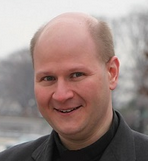New York Governor Andrew Cuomo and President Donald Trump are verbally sparring over who bears the blame for the state’s lack of ventilators, a crucial need for patients suffering from the coronavirus. Beneath the incendiary rhetoric of the two leaders, neither of whom is a stranger to verbal fisticuffs, lies an important but little-remarked fact.
The insight revolves around one number: 15,783. That figure spotlights failings well beyond this controversy.
The battle of blame-shifting involves who should be purchasing ventilators to treat patients in the outbreak’s U.S. epicenter. Cuomo said on Tuesday that the state has 7,000 ventilator machines but needs at least 30,000 by the time the COVID-19 pandemic reaches its apex, which he forecasts will come in approximately three weeks. FEMA, he said, had sent only 400 machines.
“We’ve tried everything else. The only way we can obtain these ventilators is from the federal government. Period,” he said.
Cuomo bluntly told the president, “You pick the 26,000 people who are going to die because you only sent 400 ventilators.”
President Trump replied Tuesday night by citing a 2015 report from the New York State Department of Health, which forecasted the state’s need to purchase more ventilators. It came shortly after Cuomo’s election.
“He had 16,000 [ventilators] he could have had and didn’t buy them,” the president said. “He’s supposed to buy his own ventilators.” Still, the federal government promptly dispatched 4,000 more machines to the state.
The governor’s office responded that Trump “obviously didn’t read the document he’s citing,” because “it merely referenced that New York wouldn’t be equipped with enough ventilators for a 1918 flu pandemic. No one is.”
However, the report states that the federal government could not solve the state’s ventilator shortage in case of a severe pandemic. “There is a federal government stockpile of ventilators, but … there are not enough ventilators to be distributed to meet demand if many regions need them at once,” it states.
Interestingly, the report estimated the exact number of patients who would likely be hospitalized during a severe statewide epidemic, as well as the number of ventilators needed to treat them:
In addition, there could be 804,247 total influenza-related hospital admissions during the course of the pandemic. More than 89,610 cumulative influenza patients would need ventilator treatment and 18,619 would need them simultaneously at the peak of the severe pandemic. Because the baseline assumption that 85% of ventilators in an acute care setting are in use during any given (non-pandemic) week, during a severe influenza pandemic, there is likely to be a projected shortfall of ventilators (-15,783) during peak week demand.
The state’s leading experts forecast the severe pandemic would hospitalize 18,619 people and require 15,783 ventilators at the most.
As it turns out, their estimate was overly optimistic.
Cuomo revealed at his daily press conference on Wednesday that New York state has 30,811 cases of coronavirus. That is nearly 10 times as many infections as the next state, New Jersey (3,675) and 15 times as many as California (2,644). Twelve percent of all New Yorkers who tested positive have been hospitalized and three percent are in ICU (888 people).
“The actual hospitalizations have moved at a higher rate … than all the projected models,” he said.
Even if Cuomo had decided to stockpile the number of ventilators outlined by his handpicked public health experts—15,783—it would have been too low by almost half.
Make no mistake: The report’s authors are not fools. Health Commissioner Howard A. Zucker earned his M.D. at the age of 22, earned a law degree and has taught at Columbia University. His colleagues would similarly be considered the “best and brightest” in their fields. They certainly made the best projection they could.
And there lies the rub. Creation offers too many permutations and changes for even the “best and brightest” to foresee. The “unknown unknowns” confound accurate prediction. And inaccurate forecasts stymie successful central planning.
What is true of a novel virus is no less true of the most complex of all creatures: the human person. Free will moves each of us in ways that would-be technocrats cannot foresee. The plans premised upon these faulty assumptions will inevitably fall through in the economic, as well as the public health, sector.
If the nation’s foremost experts cannot make accurate forecasts on matters of life and death, will they have greater success fixing prices or regulating industries?
Sometimes, attempts at bureaucratic regimentation foil themselves. The same 2015 report stated, due to “severe staffing shortages,” there would “not be a sufficient number of trained staff to operate” the ventilators, even if they had them. There are about 7,600 respiratory therapists and respiratory therapy technicians in New York state, according to the state’s Office of the Professions. That’s fewer per capita than any state except Minnesota.
It is not clear why this should be the case. The state’s regulatory fees are among the nation’s highest, but other licensing requirements are not dramatically out-of-line with those of other states.
The shortage may be simply part of the state’s brain drain. More people left New York in 2019 than any state in the country. A total of 1.4 million people have made the exodus since 2010, according to the Empire Center. Their top destination is Florida, which has no state income tax.
“The cost of living in New York—the high taxes, regulations, and housing costs—are making it untenable to live the American dream here,” said Staten Island Councilman Joe Borelli.
State regulators likely didn’t see that coming, either.
As Jack London’s “To Build a Fire” teaches, a handful of minor oversights pave the way for inestimable tragedies.

